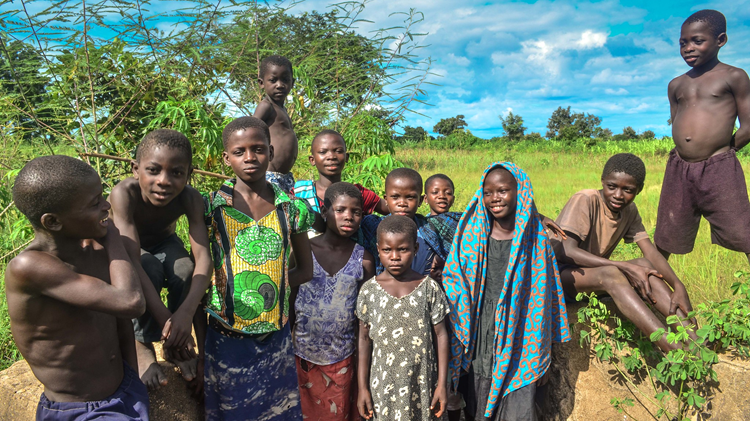Africa steps into the climate void: a promising sign for COP30?

At a recent regional summit, African leaders shifted the tone, moving from pleas to plans and positioning themselves as builders of the next climate economy.
As the world looks toward COP30 in Belém, Brazil (12-21 November 2025), the message from the recent Africa Climate Summit in Addis Ababa still echoes with unusual clarity: Africa is no longer waiting to be saved; it is leading. The Second Africa Climate Summit, held earlier in September 2025, marked a turning point in tone, ambition and agency. It revealed a continent no longer content to be the object of sympathy but determined to be the engine of solutions.
That pivot could not come at a better time. With global climate leadership fraying and cooperation strained, Africa’s pragmatic, solution-driven approach offers a template for renewal. In Addis, leaders spoke less of vulnerability and more of opportunity; less of debt and more of design. They moved the climate conversation from pleas to plans, showing the world what ownership looks like when vision meets pragmatism. This shift, from victimhood to vision, was unmistakable and therefore the Addis gathering stood apart from earlier summits. For the first time, Africa’s leaders spoke not as petitioners but as problem-solvers, staking their claim in shaping the global climate agenda. The familiar tone of grievance had given way to confidence and clarity of purpose. Ethiopia’s Prime Minister Abiy Ahmed captured it best when he declared:
‘We are not here to negotiate our survival. We are here to design the world’s next climate economy.’
It was not rhetoric. It was rooted in lived experience. Over the past seven years, Ethiopia’s Green Legacy campaign has mobilised millions of citizens to plant more than 48 billion trees, restoring degraded landscapes and improving rural livelihoods. Climate-smart wheat and irrigation programmes have reduced the country’s reliance on imports while raising farmer incomes and boosting food security. At the same time, the Grand Ethiopian Renaissance Dam is nearing completion, set to deliver 5 000 megawatts of renewable power across the region and transform Ethiopia into an energy exporter. Across the continent, similar stories of adaptation and innovation abound. Kenya is scaling up geothermal and green hydrogen projects, Namibia is pioneering large-scale solar investments, and Rwanda’s Green Growth and Climate Resilience Strategy has become a model for integrating climate planning into national development. These are not symbolic gestures; they are proof that African nations are experimenting, investing and learning by doing. Together, they demonstrate that the continent’s climate leadership is no longer aspirational, but operational.
The summit’s agenda was intentionally action-oriented: from nature-based solutions and green infrastructure to adaptation, early-warning systems and health, culminating in financing African-led solutions “with speed, at scale and with integrity.” The design itself signalled a continental determination to move from promise to pipeline.
The Africa Climate Summit’s agenda was intentionally action-oriented and signalled a continental determination to move from promise to pipeline
That same spirit of ownership carried through to the financial discussions, perhaps being the most powerful shift in Addis. Abiy’s call to 'replace climate aid with climate investment' summed up a new economic posture. The Africa Green Industrialisation Initiative (AGII) brought together African development banks and commercial lenders to mobilise over US$100 billion for renewable-powered industries and sustainable value chains. The principle was simple but revolutionary: start with African capital, then crowd in the world.
This reorientation challenges the long-standing asymmetry in climate finance, where Africa has often been a passive recipient rather than a co-designer of solutions (Figure 1). By mobilising domestic capital first, African institutions can set priorities, shape project pipelines and negotiate from a position of strength. It also signals to global investors that Africa’s green transition is not dependent on charity, but open to partnership on fair terms.
It is a message that COP30 negotiators would do well to hear. Africa is not short of ideas or will—it is short of trustworthy global finance mechanisms that recognise its innovations as investable opportunities, not experiments.
Nowhere was this more evident than in Africa’s growing drive to build power through data and cities. Addis saw Africa lay claim to the next frontier of climate leadership: data sovereignty. Abiy underscored that Africa must map its own forests, measure its own carbon, and price its own ecosystems. ‘Climate data is not just science—it is the new currency of power,’ he said. In an era of disinformation, African-led evidence will determine how carbon markets, biodiversity credits, and adaptation finance evolve.
The Green, Inclusive, and Smart Cities Initiative showed this leadership at the city scale: introducing bicycle lanes, electric mobility and green public spaces that make climate action visible and local. With Africa’s urban population expected to double by 2050, these are not pilot projects; they are blueprints for resilience.
Together, these signals form a message that Africa will carry to Belém. By the time delegates gather for COP30, the lessons from Addis should be impossible to ignore. The African Union Commission’s push for fair, predictable and justice-based climate finance resonates far beyond the continent. So does the symbolism of leaders planting trees together before signing deals—a reminder that action can start at home, now and grow outward.
Somalia’s new National Climate Fund, Kenya’s doctrine of “invest with us to build”, and Ethiopia’s bid to host COP32 all point in the same direction: a confident continent ready to co-author the global climate script. These initiatives reveal how climate leadership is increasingly being institutionalised across the continent. Countries are not just making promises, they are creating funds, doctrines and frameworks that can outlast electoral cycles. This steady institutional build-up is what gives Africa’s climate diplomacy its growing credibility on the world stage.
If COP30 is to rebuild trust in international climate governance, it must meet Africa where it already stands: in the realm of solutions, not sympathy. The world can no longer afford a divided climate movement. What Addis demonstrated, and what Belém must affirm, is that leadership from the South is not just desirable; it is indispensable.
If COP30 is to rebuild trust in international climate governance, it must meet Africa where it already stands: in the realm of solutions, not sympathy
As the world looks beyond COP30, Africa’s leaders have reframed the narrative from survival to strategy, from victimhood to vision. Their approach blends urgency with agency, and resilience with realism. As seas rise and budgets strain, the world will need this steadiness more than ever.
When the history of global climate cooperation is written, Addis may be remembered as the moment the continent stopped asking for permission—and Belém as the place where the world finally recognised it.
Image: mariananbu/Pixabay
Republication of our Africa Tomorrow articles only with permission. Contact us for any enquiries.






